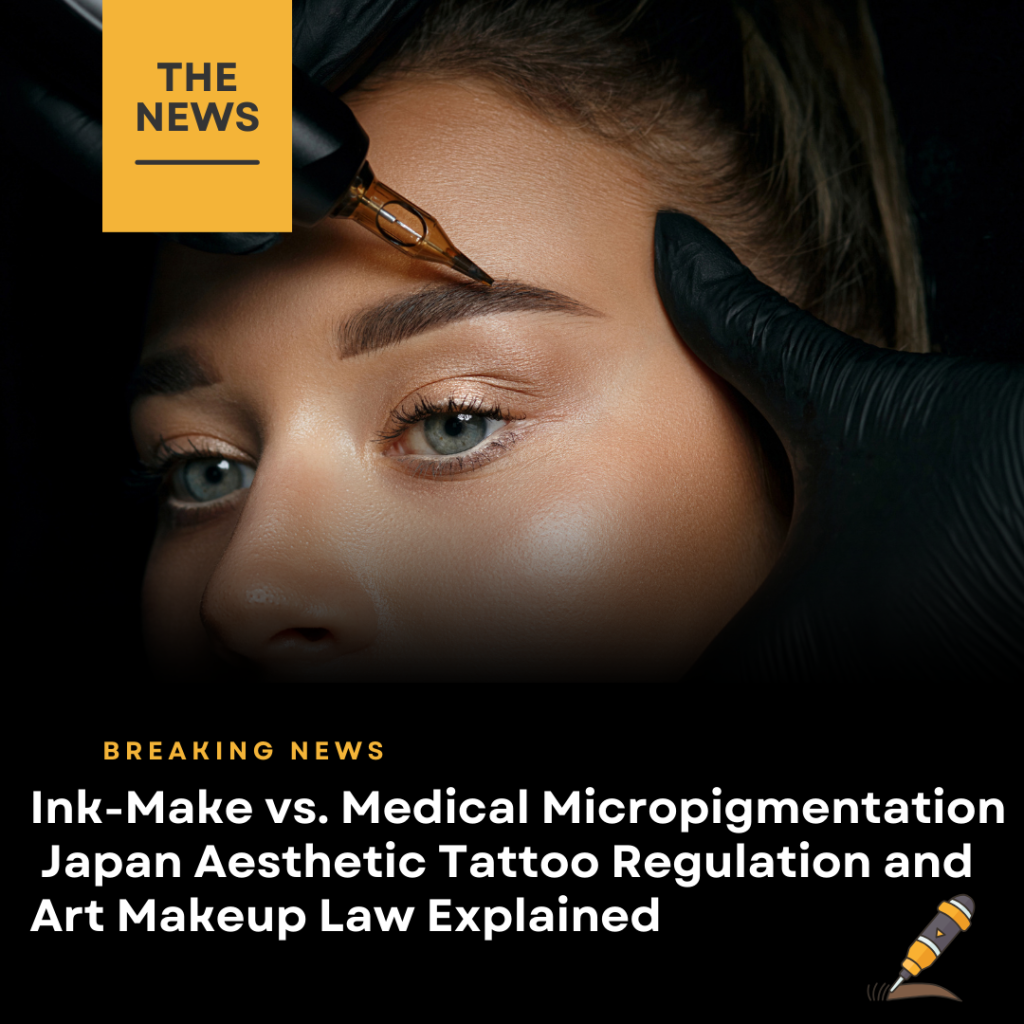
In today’s Breaking News, we spotlight the fast-growing debate in Japan between
“ink-make” (aesthetic procedures by beauticians) and
“medical micropigmentation” (clinical procedures by doctors and nurses).
Both involve inserting pigments under the skin,
but the real difference emerges when complications occur.
Japan’s Supreme Court and the Ministry of Health, Labour and Welfare (MHLW)
have issued conflicting positions,
creating a legal grey zone that impacts patient trust —
including for international visitors.
INDEX
1. Facts — Two Procedures, One Technique
Two procedures are drawing attention in Japan:
ink-make and medical micropigmentation.
Both involve inserting pigments under the skin,
but the frameworks differ.
Ink-make is offered by beauticians in salons,
treated as an aesthetic service.
Medical micropigmentation is performed by doctors or nurses in clinics,
often for reconstructive purposes such as nipple-areola restoration
or scar camouflage.
2. Background — Legal Grey Zones Expand
The legal backdrop is contradictory.
In 2020, the Supreme Court ruled that tattooing is not a medical act.
Yet in 2023, the MHLW issued a notice stating that micropigmentation is a medical act.
This duality confuses regulators and practitioners alike.
The decisive difference lies in what happens when things go wrong.
With ink-make, infections or adverse reactions
may fall outside clear medical responsibility.
With medical micropigmentation,
a licensed physician can diagnose and prescribe treatment immediately,
and liability is institutionally defined.
3. Implications — Why It Matters for Global Patients
For patients, the critical issue is not the routine procedure
but how complications are managed.
The grey zone risks undermining confidence,
especially among international patients seeking treatment in Japan.
From a global perspective, Japan must clarify its framework:
Where does tattooing end, and where does medical micropigmentation begin?
Without clear rules,
the line between beauty and medicine stays blurred —
eroding trust at home and abroad.
Editor-in-Chief’s Note
~When Trouble Strikes: Why Medical Micropigmentation Holds the Advantage in Japan~
Safety is tested not when things go smoothly, but when trouble strikes.
The difference between ink-make and medical micropigmentation
becomes decisive when complications occur.
The MHLW’s stance reflects risk management realities.
For international patients, the question is simple:
Which option ensures safety and accountability?
At present, only medical micropigmentation provides a clear answer.
Japan must move beyond inconsistent rulings
and establish coherent regulations
that protect patients and sustain global trust.
Key Discussion Points
-
Safety & Qualifications: beauticians vs. licensed clinicians
-
Legal Contradictions: Supreme Court vs. MHLW
-
Patient Confusion: unclear guidance during complications
-
International Trust: medical tourism depends on credible rules
Takeaways
- Ink-make = aesthetic service by beauticians
- Medical micropigmentation = clinical procedure by doctors/nurses
- Complications expose the difference — only medical settings ensure immediate care
- Supreme Court and MHLW rulings contradict
- Patients lean toward medical micropigmentation for safety
- Japan needs unified rules for global credibility
References
-
MHLW Notification (2023-07-03, 医政医発0703第5号)
“Handling of so-called art-makeup procedures performed by non-licensed individuals” (in Japanese)
Ministry of Health, Labour and Welfare official site -
Supreme Court of Japan ruling (2020) – Tattooing not considered a medical act (in Japanese)
-
Lex Commentary – Legal analysis of micropigmentation and tattoo regulation (in Japanese, PDF)
Law Library Japan commentary PDF
At NERO, we post news related to aesthetic medicine as soon as we catch the trend.
Each article includes commentary from our Editor-in-Chief, offering insights you won’t find elsewhere.
If you want to stay ahead of the latest developments in Japan’s aesthetic medicine scene, be sure to bookmark us.




